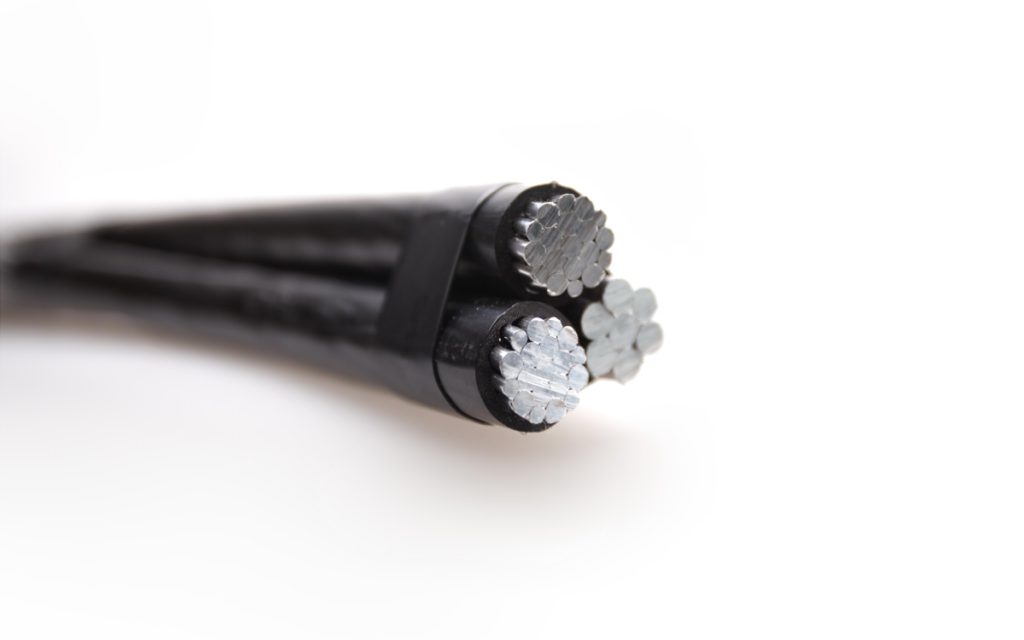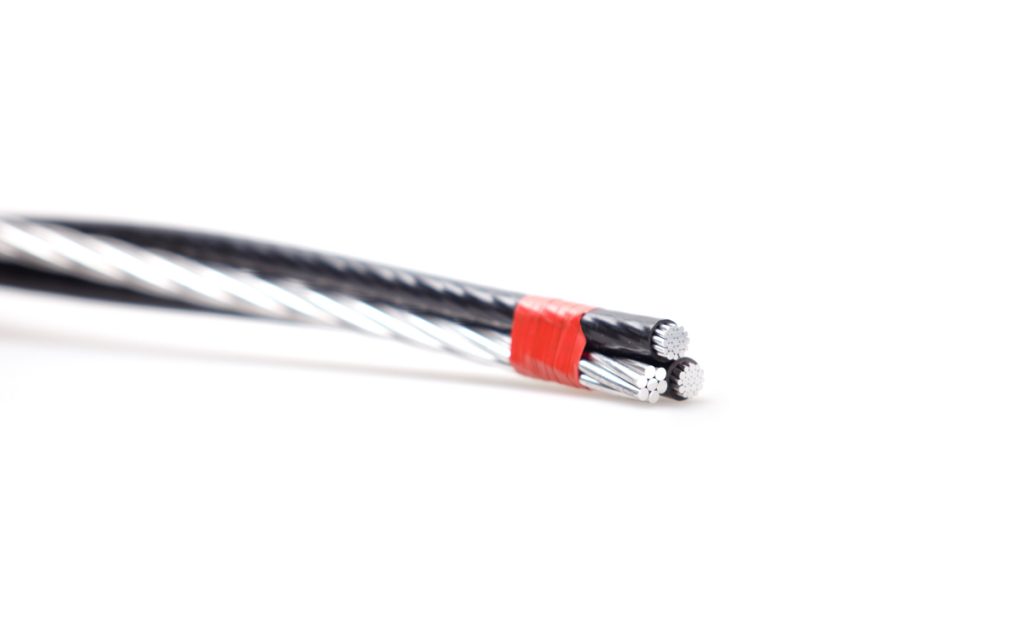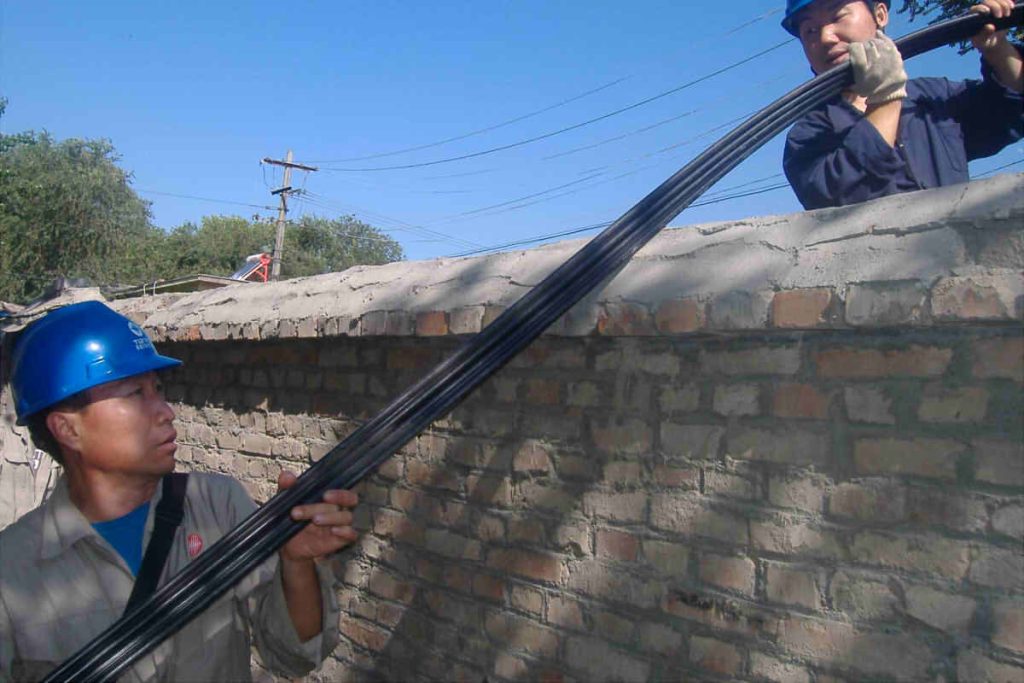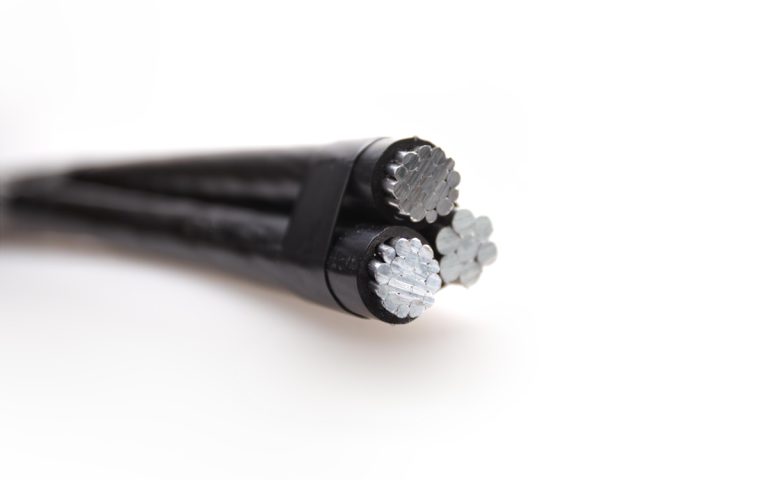What is self-supporting cable?
The self-supporting cable is a type of electrical cable used for urban and rural aerial distribution networks.. It is made up of a set of pure aluminum conductors, each insulated with XLPE and assembled around a support element.

Unlike other cables, the self-supporting cable does not require additional support for its installation, since it is designed to support its own weight. This is achieved by means of a series of conductive threads that are coiled in a spiral around a central core..
Thanks to its innovative design, this type of cable offers a number of advantages compared to other types of electrical cables. These advantages include lower installation and maintenance cost, higher transmission capacity and quality, and greater flexibility and adaptability.
What is self-supporting cable used for??
The self-supporting cable is mainly used in urban and rural overhead distribution networks., with tensions up to 1 kV. Installs on support poles, clamped, and is used to transport electrical energy from the source to the point of consumption.
Los self-supporting cables are an excellent option for areas with mountainous terrain, rivers, forests or other hard-to-reach areas, since they can be easily adjusted to the customer's needs and can be installed on any type of terrain.
Advantages of Using Self-Supporting Cables

Lower installation and maintenance cost
Because the self-supporting cable does not need additional structures for its installation, installation and maintenance cost is much lower compared to other types of cables. This is because it does not require excavation or support structures., which means it installs faster and easier. Besides, being suspended in the air, the self-supporting cable is less exposed to damage from external agents, like rodents, moisture or vandalism.
Greater transmission capacity and quality
The self-supporting cable has a larger cross section than other cables, allowing you to transmit more signals with less loss and distortions. Besides, being isolated from the ground and other sources of interference, self-supporting cable offers better signal quality and less chance of outages or failures.
Greater flexibility and adaptability
This type of aerial cable can be installed on any type of terrain and in areas of difficult access, like mountains, rivers or forests. Besides, can be easily adjusted to customer needs, since the distance between the anchor points can be widened or reduced.
Greater durability
The self-supporting cable is designed to support its own weight., making it stronger and more durable than other cables. This means that it can withstand extreme weather conditions and has a longer lifespan compared to other types of cables..
Laying of the Self-Supporting Cable
The laying of the self-supporting cable is a relatively simple task compared to other types of cabling, since it does not require an additional support structure. The cable is fixed directly to the posts, towers or existing structures, using special clamps that guarantee a safe and reliable fastening.

The self-supporting cable installation process involves the use of specialized equipment and tools, like cranes, lifting platforms and cutting and clamping tools. The cable is wound on large reels and transported to the installation site, where it is unrolled and carefully placed on top of the support posts.
Once the cable has been fixed in place, a series of tests and measurements are carried out to ensure that the cable is working properly and meeting the required quality and safety standards.
Usually, the laying of the self-supporting aerial cable It is a fast and efficient process that offers a reliable and safe solution for the distribution of electrical energy in urban and rural areas.. Besides, due to its robust design and construction, this type of cable is able to withstand extreme weather conditions and resist corrosion and the wear and tear of time.

